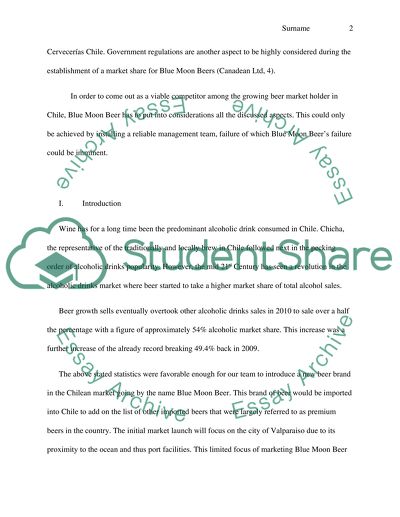Cite this document
(“Market and competitive analysis: Introducing Blue Moon beer to Chile Research Paper”, n.d.)
Market and competitive analysis: Introducing Blue Moon beer to Chile Research Paper. Retrieved from https://studentshare.org/marketing/1595145-market-and-competitive-analysis-introducing-blue-moon-beer-to-chile
Market and competitive analysis: Introducing Blue Moon beer to Chile Research Paper. Retrieved from https://studentshare.org/marketing/1595145-market-and-competitive-analysis-introducing-blue-moon-beer-to-chile
(Market and Competitive Analysis: Introducing Blue Moon Beer to Chile Research Paper)
Market and Competitive Analysis: Introducing Blue Moon Beer to Chile Research Paper. https://studentshare.org/marketing/1595145-market-and-competitive-analysis-introducing-blue-moon-beer-to-chile.
Market and Competitive Analysis: Introducing Blue Moon Beer to Chile Research Paper. https://studentshare.org/marketing/1595145-market-and-competitive-analysis-introducing-blue-moon-beer-to-chile.
“Market and Competitive Analysis: Introducing Blue Moon Beer to Chile Research Paper”, n.d. https://studentshare.org/marketing/1595145-market-and-competitive-analysis-introducing-blue-moon-beer-to-chile.


